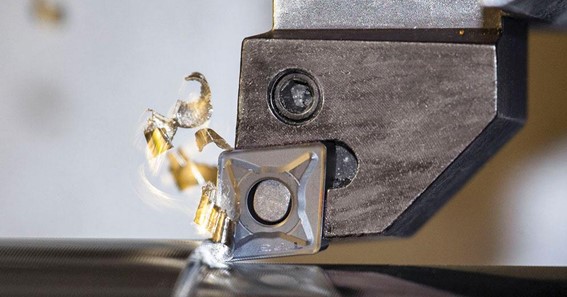Are you curious to know what is tool wear? You have come to the right place as I am going to tell you everything about tool wear in a very simple explanation. Without further discussion let’s begin to know what is tool wear?
In the realm of manufacturing and machining, the condition of cutting tools is of paramount importance. Tool wear is an inevitable phenomenon that occurs during machining operations, and it can significantly impact the quality, efficiency, and cost-effectiveness of the manufacturing process. In this blog post, we will delve into the concept of tool wear, explore its causes and effects, and discuss strategies to mitigate its impact on machining operations.
What Is Tool Wear?
Tool wear refers to the gradual deterioration or degradation of cutting tools as a result of their interaction with the workpiece during machining processes. It is an expected occurrence due to the intense forces, friction, and heat generated during cutting operations. As the tool comes into contact with the workpiece, material is removed from the tool surface, leading to changes in its dimensions, shape, and cutting performance.
Causes Of Tool Wear:
Several factors contribute to tool wear, including:
- Mechanical Stress: The cutting forces exerted on the tool during machining operations subject it to mechanical stress, leading to wear and deformation. High cutting forces, improper tool geometry, and excessive feed rates can accelerate tool wear.
- Friction and Heat: The contact between the tool and the workpiece generates friction, resulting in the generation of heat. Elevated temperatures can soften the tool material, promote chemical reactions with the workpiece, and accelerate wear processes.
- Material Properties: The properties of the workpiece material, such as hardness, toughness, and abrasiveness, can influence tool wear. Hard and abrasive materials tend to cause more significant tool wear than softer materials.
Effects Of Tool Wear:
Tool wear can have several detrimental effects on machining processes, including:
- Diminished Cutting Performance: As the tool wears, its cutting edges become dull, reducing its ability to efficiently remove material. This leads to poor surface finish, increased cutting forces, and diminished productivity.
- Inaccurate Dimensional Control: Tool wear can result in dimensional inaccuracies in machined parts. The worn tool may produce undersized or oversized features, leading to rejected or out-of-specification components.
- Increased Production Costs: Tool wear necessitates frequent tool changes, leading to increased downtime, tooling costs, and labor expenses. This can adversely impact the overall cost-effectiveness of the manufacturing process.
Mitigating Tool Wear:
To mitigate the impact of tool wear, manufacturers employ various strategies, including:
- Tool Material Selection: Choosing tool materials with high hardness, wear resistance, and thermal stability can extend tool life and minimize wear rates. Hard coatings, such as titanium nitride (TiN) or diamond-like carbon (DLC), can enhance tool durability.
- Cutting Parameters Optimization: Adjusting cutting parameters, such as cutting speed, feed rate, and depth of cut, can help optimize tool life. Finding the right balance between productivity and tool wear is crucial.
- Lubrication and Cooling: Implementing effective lubrication and cooling methods, such as using cutting fluids or coolants, helps dissipate heat and reduce friction, thereby extending tool life.
- Tool Monitoring and Maintenance: Regular monitoring of tool wear through visual inspection, measurements, or advanced tool monitoring systems allows for timely tool changes or reconditioning. Proper tool maintenance, such as sharpening or regrinding, can restore cutting performance.
Conclusion:
Tool wear is an inherent challenge in machining operations, but understanding its causes, effects, and mitigation strategies can help manufacturers optimize their processes and improve productivity. By selecting appropriate tool materials, optimizing cutting parameters, implementing lubrication and cooling techniques, and monitoring tool wear, manufacturers can mitigate the negative impacts of tool wear and enhance the efficiency and quality of their manufacturing processes. Continuous research and development in tooling technologies are instrumental in advancing cutting tool materials and designs, providing further opportunities to combat tool wear and improve machining performance.
FAQ
What Do You Mean By Tool Wear?
Tool wear is the breakdown and gradual failure of a cutting tool due to regular operation. Every tool will experience tool wear at some point in its life.
What Is The Cause Of Tool Wear?
Tool wear is the gradual breakdown of machine tools as a result of cutting operation, eventually leading to tool failure. Because tools and workpieces are in constant contact with severe friction and rubbing, tools become stressed over time.
What Is Tool Wear In Metal Cutting?
Tool wear can be defined as the change in the shape of a tool from its original shape during the cutting operation, as a result of the gradual loss of tool material called tool wear.
What Is Tool Life And Wear?
Tool life refers to the useful life of a machine tool. It can be expressed in the amount of good parts that a given tool is capable of machining. Once a tool is worn to the point that the parts being created are out of spec, it’s life is effectively over and the tool should be replaced.
I Have Covered All The Following Queries And Topics In The Above Article
What Is Tool Wear And Tool Life
What Is Tool Wear Rate
What Is Tool Wear Used For
What Is Tool Wear In Machining
Types Of Tool Wear
What Is Tool Wear And Tool Life
What Is Tool Wear And Its Types
What Is Tool Wear Pdf
Types Of Tool Wear Pdf
Causes Of Tool Wear
What Is Tool Wear
What can cause tool wear
What is tool wear?

